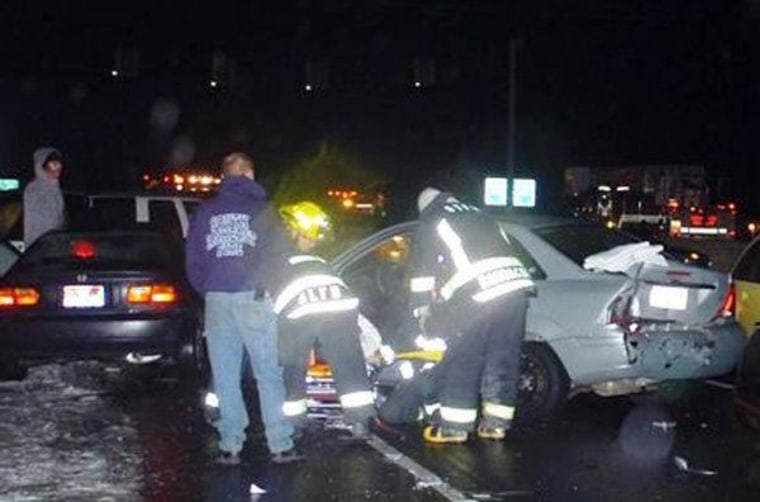Motor vehicle crashes are the leading cause of death for U.S. teens, according to government statistics, but a new insurance industry report suggests the numbers could fall sharply by tightening restrictions on teen driver laws.
Among teens, auto crashes are responsible for one in three deaths each year, reports the Centers for Disease Control, but the new study by the Insurance Institute for Highway Safety projects that at least 500 lives could be saved annually by the use of more restrictive licenses. In some states, the IIHS said, it expects the fatality rate among teen drivers to fall by as much as 50%.
The new study points out what it calls best-practice policies enacted by various states, including a ban on carrying teen passengers, limited night driving and a requirement for supervised driving.
Ford Offering Buyouts to 98,000 Retirees
“Even the best states can do better,” says Anne McCartt, the senior vice president for research at IIHS. “There’s room for improvement across the board, and states could see immediate reductions in fatal crashes and collision claims as soon as the beefed-up provisions are in force.”
States with the toughest restrictions have reported the sharpest drop in teen road fatalities compared to those with less restrictive policies, the IIHS reported. The Institute isolated five specific policies that appear to be helping:
- Later driving age, 17 in New Jersey;
- Later permit ages, 16 in the District of Columbia, New York, Massachusetts, Delaware and five other states;
- A minimum 65 hours of supervised driving in Pennsylvania;
- Night driving restrictions in Idaho and South Carolina; and
- A ban on carrying teen passengers in 15 states and Washington, D.C.
The IIHS report notes that all but nine states now have so-called graduated drivers licenses, or GDLs, which are designed to let teens build up experience and maturity behind the wheel. There are three stages: a period of supervised driving under a learner’s permit, an intermediate licensing period that maintains certain restrictions, followed by a license providing full privileges.
Chevrolet Inks Deal with Manchester United
Since 2000, the IIHS has rated the various states according to the effectiveness of their teen driving regulations. Initially, only six states and D.C. rated “Good.” Today, however, that’s up to 36 states and the District. Another seven now earn “Fair” ratings, with seven others rated “Marginal.”
But the IIHS says that the move to tougher restrictions has run out of steam and to nudge state legislators to act it is shifting to a new strategy that will let the public get a sense of how many lives could be saved with stricter rules. Click Here to access the calculator at the IIHS website.
“States don’t have to adopt the toughest laws in the nation to realize safety gains. Strengthening one or two components pays off. To maximize all of the benefits of graduated licensing, however, we would encourage lawmakers to consider the strongest provisions,” McCartt says.
South Dakota, for example, could see a full 63% drop in fatal crashes, the IIHS projects, and a 37% decline in collision claims.
Even states that have enacted many of the proposed restrictions could do better, says McCartt. By further raising its minimum license age, increasing supervised driving hours and adding a night driving restriction, the insurance trade group projects Connecticut would see a 17% drop in fatal crashes and a 13% reduction in collision claims.
McCartt acknowledges that while the evidence supports further restrictions it may be difficult to get lawmakers to act considering the proposals are always “politically popular.”
